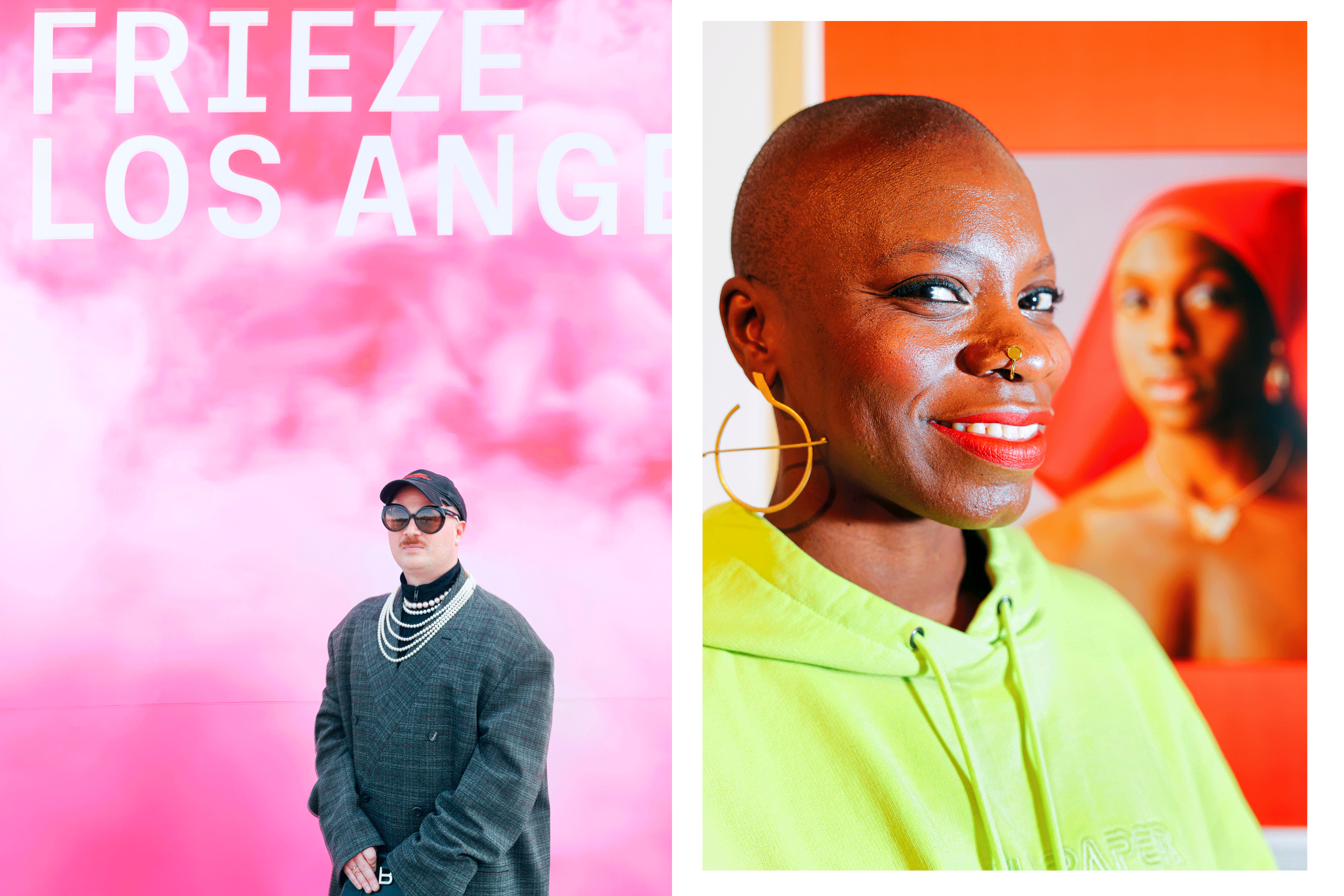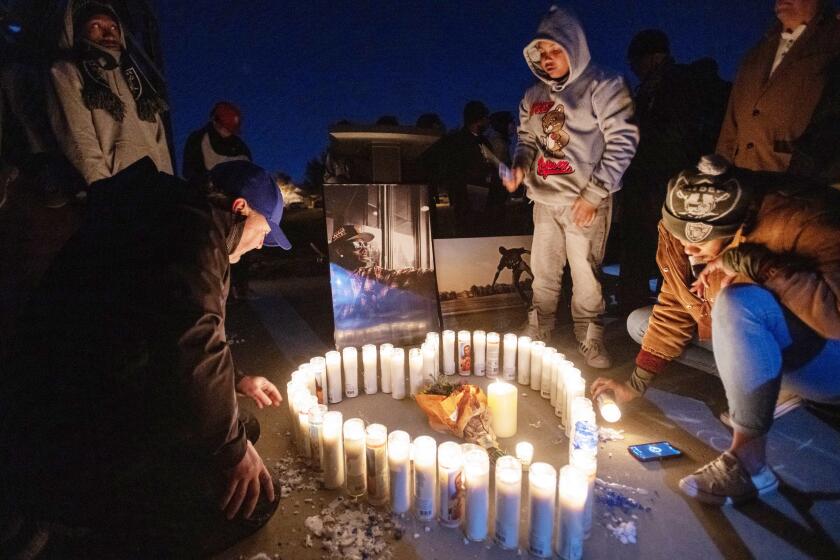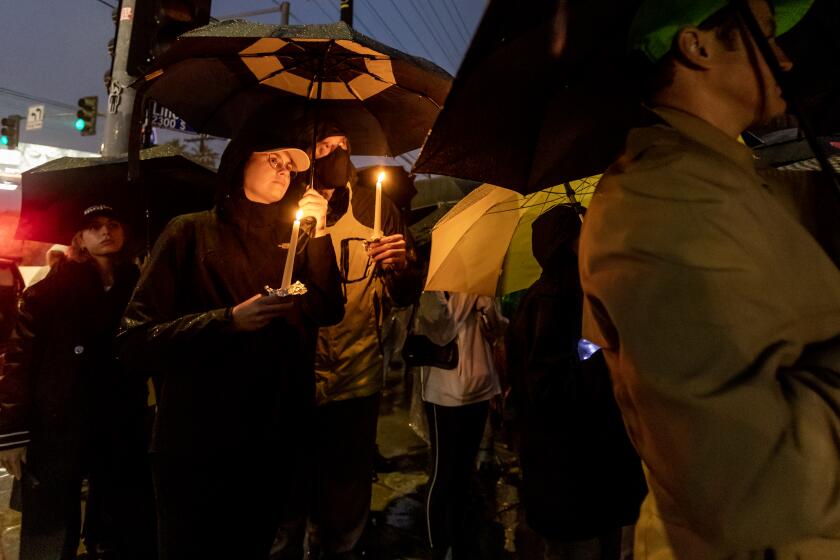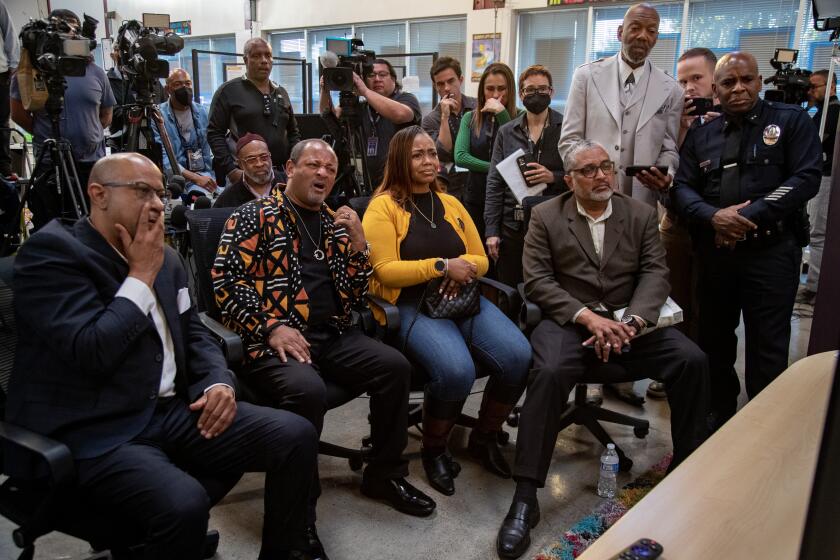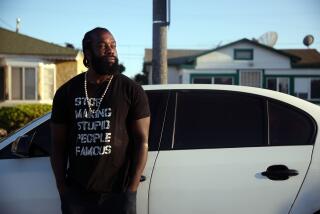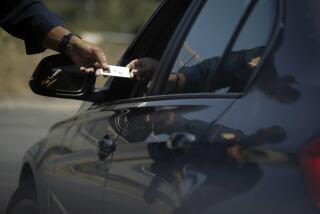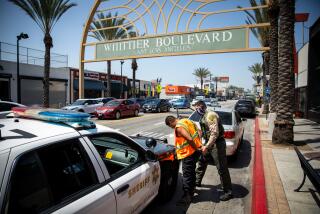Column: How California could become the model for getting cops out of traffic stops
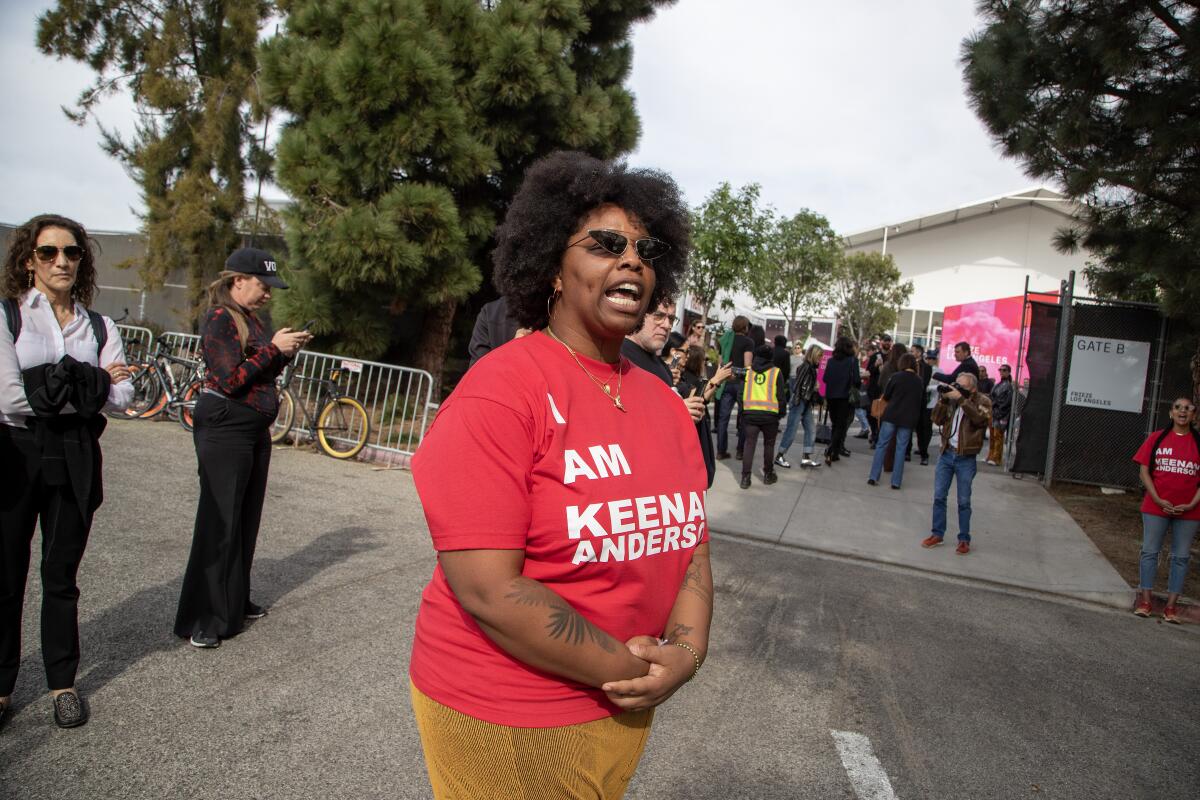
More than most people, Patrisse Cullors knows the highs and lows of fighting for police reform. Of believing that, at long last, a new law is about to enacted that will require more from those who carry badges and guns — only to realize that, no, it’s not actually going to happen.
She is, after all, one of the founders of Black Lives Matter.
After stepping down as executive director of the movement’s nonprofit two years ago, Cullors wasn’t exactly eager to board that emotional roller coaster again. But then her cousin Keenan Anderson died after a needlessly violent encounter with the LAPD that began with a minor traffic collision.
Now, Cullors is once again high on the hope that police reform is possible. Not so much through the joke we call Congress and the stalled federal George Floyd Justice in Policing Act but through actions by state and local governments. And if she’s right, California is poised to be the trendsetter.
“It feels a bit exhausting to ask people to keep at it, given all that has happened,” Cullors told me, taking a break from planning a protest performance at Frieze Los Angeles about lives lost to police traffic stops. “But the reality is that we do. We have to talk to our elected officials. We have to push.”
One of those elected officials is sure to be state Sen. Steven Bradford (D-Gardena).
Frieze Los Angeles is bigger than ever this year, with more than 120 participating galleries representing 22 countries. Here are some of the artists, curators and collectors that filled the art fair tent on opening day.
In recent days, he released more details about his Senate Bill 50, which would prohibit law enforcement officers from pulling over drivers for minor infractions, such as a broken taillight or tinted windows, unless an “independent basis for a stop exists.” In other words, there would be new restrictions on pretextual stops, which disproportionately subject Black and Latino drivers to ineffective fishing expeditions for more serious crimes.
“We have seen far too many times how traffic stops can rapidly escalate and turn deadly,” Bradford said in a statement. “In this day and age, there’s no reason why Californians should be stopped and potentially subjected to brutality or dehumanization because of an expired license plate.”
In essence, Bradford is attempting to expand statewide what Los Angeles has been doing in some form since 2019, much to the ire of the police union.
And in recent weeks — particularly after the death of Sacramento native Tyre Nichols, who was dragged from his car in Memphis and brutally beaten by police during a traffic stop — elected officials in several other cities and states have tried to do the same, with varying degrees of success. Oregon, which was ahead of the curve, has probably been the most successful.
So, yes, putting broad restrictions on pretextual stops in the nation’s most populous state would be transformative as a proof of concept for the rest of the U.S.
But for Los Angeles in particular, another part of Bradford’s bill would actually be even more transformative. It would give cities and counties the power to remove cops from traffic stops altogether, leaving the job to other, unarmed government employees.
As a skater growing up in a diverse suburb, he ‘loved everyone,’ even as he knew racism existed and cops could use it against him. It happened in Memphis.
Right now, this isn’t possible in L.A. or anywhere else in California, because state law requires that law enforcement officers enforce violations of the vehicular code. This is what stopped Berkeley from moving forward with its much-hyped plan to have unarmed employees handle certain minor traffic situations. And it surely would throw a wrench in L.A. City Councilmember Marqueece Harris-Dawson’s plan to do the same here.
“This doesn’t mandate anything,” said Assemblymember Isaac Bryan (D-Los Angeles), a co-sponsor of Bradford’s bill. “It just codifies very clearly the local control that cities have to be innovative, and that the state isn’t going to stop you from rolling out the Department of Transportation or whoever else you want to handle certain types of traffic enforcement.”
I suspect the law enforcement unions that wield so much power at the Capitol will see things differently. Indeed, they helped kill Bradford’s last attempt to restrict pretextual stops.
A different outcome will require public pressure and, more than anything, activism. Already in the stories of Nichols and Anderson — both Black men from California whose last moments of terror were captured on video during traffic stops gone wrong — there are powerful reasons for lawmakers to embrace change and push forward with police reform.
“My hope is that when my cousin’s name is used in this next legislative cycle, that it’s used for good,” Cullors told me. “That it’s used to help create more change here in the state of California and at the local levels, and not just as political fodder.”
::
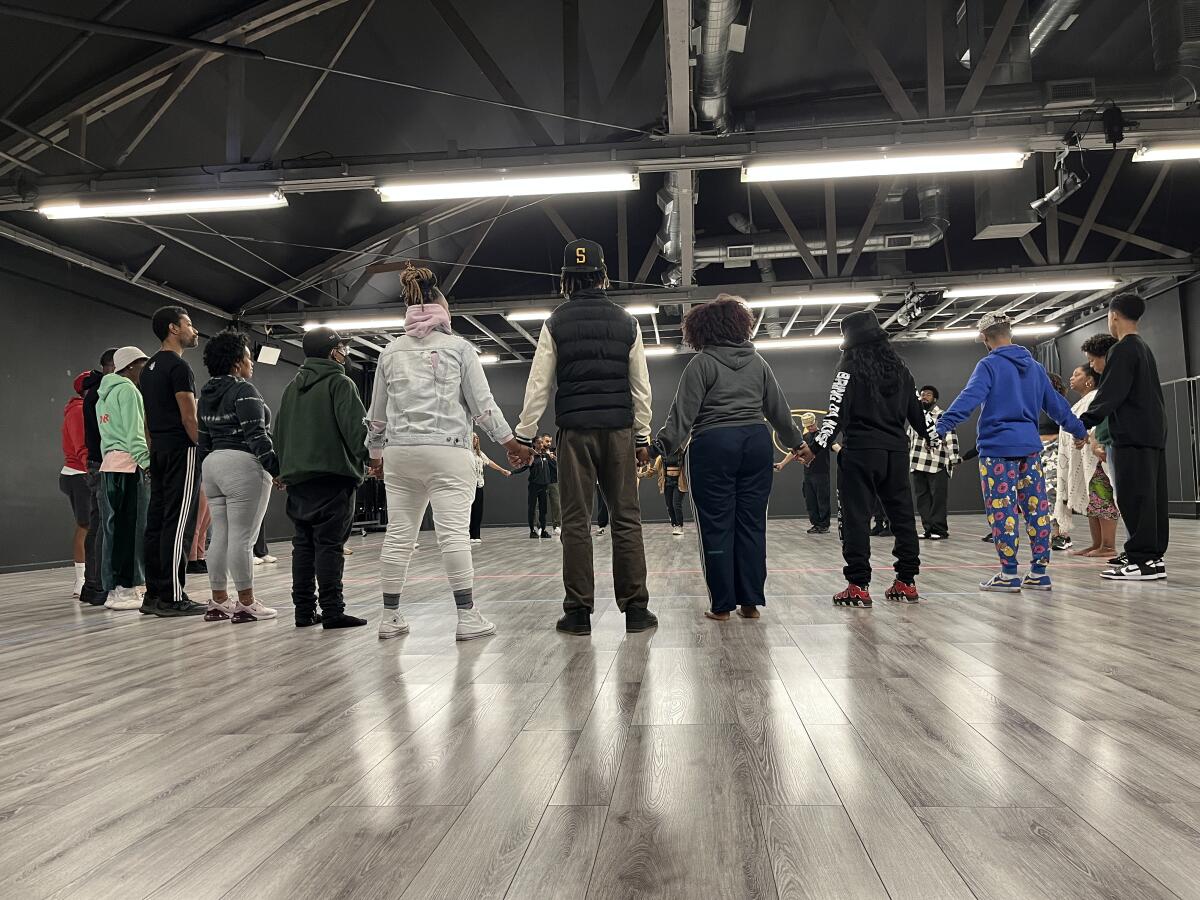
On Friday morning, a few dozen dancers and activists grew quiet as they clasped hands and bowed their heads in prayer at Mihran K. Studios in Burbank. The tears would come later.
They had gathered there at the request of Cullors, who, as an artist, was looking for a way to make a statement about her cousin’s death and to do so in front of the people who need to hear it most — the affluent, celebrity-dotted crowd that would pack the Frieze Los Angeles art fair Saturday in Santa Monica.
JaQuel Knight, best known for his work as Beyonce’s choreographer on “Formation” and “Single Ladies,” and choreographed Cullors’ performance protest, asked God to let those assembled “be their voices, those voices that want to shout so loud. That we can stand and be their vessel.”
One by one, the dancers and activists rehearsed their scripts, reciting aloud the names of dozens of Black people who’ve died after police traffic stops and the trivial reasons they were pulled over in the first place, from outdated vehicle registrations to being fidgety. Many, including Anderson’s brother, cried as they spoke.
“How many must fall until we’re able to stand?” they demanded in unison.
In its latest report, California’s Racial and Identity Profiling Advisory Board found deep racial disparities among those detained by the state’s 58 largest policing agencies. Black people, for example, accounted for 15% of traffic and pedestrian stops, even though we make up just 6% of the population.
“I spent pretty much the majority of my life being in a car in Los Angeles with Black people — mostly adults who were always terrified when a police officer was behind us or next to us,” Cullors told me. “Not because we did anything, quote ‘wrong,’ but they knew if we were pulled over by the police what could happen.”
Keenan Anderson, cousin of a BLM founder, is among three men of color who have died this year after encounters with LAPD officers. A vigil was packed.
Her words made me think of the last time I got pulled over. It was just a few weeks ago in my Westside L.A. neighborhood, where policing is typically done guardian-style, rather than warrior-style, and officers are rarely seen unless there’s something really wrong.
Which is why when I spotted a motorcycle cop parked in the middle of street, I got so curious and so distracted that I slowed down but rolled through a stop sign.
Seeing this, the cop suddenly became irate. He extended an index finger and jabbed toward me, then toward the curb. I pulled over. He stalked up to my passenger window, getting so close that he nearly stuck his head inside.
“I’ll give you two seconds to tell me what you did wrong!” he yelled.
He was so loud that an older white couple, out for a leisurely stroll across the street, flinched and turned around askance. So loud that the birds and squirrels in the trees above us scurried away.
I flashed what I hoped was a disarming smile while silently sizing up this seething Black man, standing only a few feet away, wearing a badge and carrying a gun.
Not for the first time during a traffic stop, I found myself feeling more than a little guilty and sadly grateful that I had been born a light-skinned Black woman and not a dark-skinned Black man. Too often, such characteristics — while far from a guaranteed pass — can be the difference between an officer deciding that you more or less belong in a neighborhood like mine and just need to be chided like a child or deciding that you don’t belong and must be treated as a threat.
With five Black ex-cops charged with murder in Memphis, Tenn., Lora King reflects on what has changed since her father was beaten by the LAPD in 1991.
I’ve unfortunately experienced this enough times in my life — in different cities, in different states, in different vehicles, both as passenger and as a driver — to know that it’s true. And yet, I also know that this — the racism and the colorism — is not what policing should be.
What we need are more ideas to fix this mess, not fewer. For decades, we’ve been beholden mostly to ideas from law enforcement and to their excuses and objections as to why this reform is unworkable and why that policy can’t be changed.
It’s a status quo that Cullors and others challenged with their protest performance on Saturday — even if they felt the only way to get more people to care about Black lives was to wear matching red T-shirts declaring “I am Keenan Anderson” and to shout over the din of distracted people entering and exiting an art fair.
It more or less worked, though. Many stopped to listen and even take video, treating the passionate people before them like any other exhibit at Frieze. Others wandered along, curious, then annoyed and, finally, disinterested.
Certainly we can do better, California. Why not let cities and counties experiment with creating different, hopefully more equitable and less lethal, forms of policing? Bradford’s bill seems like a good place for the state to start. A new bill in Congress would even incentivize such experiments with an annual grant program.
As for me, the cop eventually let me go with a lecture and a warning. I told him I ran the stop sign because I was looking at him, which I’m guessing soothed his apparently fragile male ego.
“Don’t do it again,” he said tersely.
He walked away. I drove away. I consider myself lucky.
More to Read
Sign up for Essential California
The most important California stories and recommendations in your inbox every morning.
You may occasionally receive promotional content from the Los Angeles Times.
